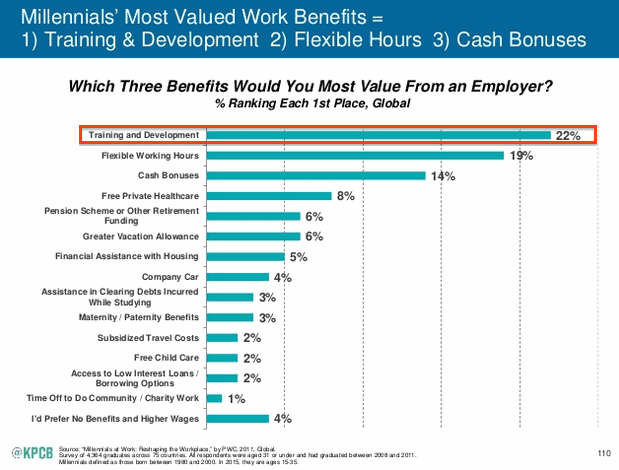While some companies like Yahoo and Reddit have banned remote work, many other companies are embracing having remote workers due to a variety of benefits.
Unfortunately, as this becomes more common, it also presents a series of challenges, especially for managers. Managing remote workers is not the same as managing someone who is in the same office as you day in and day out.
As we've helped managers with their teams at Lighthouse, we've noticed there are 5 common mistakes that can cause both morale drops and productivity issues for your remote workers.
5 Common Mistakes Managers make with their Remote Workers
Just because someone works remotely does not mean that they don't need the same attention and help that anyone in your office needs. Unfortunately, by not being in the office, many of the mistakes below occur simply because it requires different habits and approaches to accomplish the same goals with them.
When your face time with them may be limited to a few hours a week, it's easy to let these slip as you focus on the highest priority tasks and discussions. However, failing to ever discuss or make progress on these issues is a recipe for disengagement, frustration, and lost productivity. Ignore these mistakes at your own peril.
Mistake #1: Not building rapport with them
Remote workers are people, too. While they don't always have a water cooler to talk around or a lunch to share with you, they still want to feel heard and understood. They want to talk about things beyond work.
Rapport is the foundation of good management. When people feel like you know who they are, and you form a connection beyond work responsibilities, you strengthen the manager - employee bond. This translates to a variety of benefits including:
- Having confidence to come to you with any problem.
- Much more willing to open up in your one on ones with them.
- Greater openness to your feedback and coaching.
- Unafraid to share feedback and ideas with you.
- A stronger feeling of connection to you and your company.
Or put more simply:
To experience those benefits, requires effort on your part. Luckily, it's not hard. It simply requires some of your time and being intentional.
What to do: Consider having one on ones more frequently or for longer blocks of time with your remote employees. Use the extra time to ask more questions to get to know them and make small talk. Asking how their family is doing or the latest on a hobby or interest can mean a lot.
These one on one questions and this post on building rapport can help give you more ideas as well.
Mistake #2: Not involving them in key conversations
When I worked at a partially remote company, one of the biggest mistakes we repeatedly made in the office always followed the same pattern:
- Start: A problem comes up and a decision needs made
- Gather: Someone grabs everyone in the office who needs to be involved
- Decide: We talk through it and make a decision
- Notify: As we notify everyone that needs to know, we realize which remote workers should have been involved
- Oops: We move forward with the decision, apologizing (again) for not involving the remote worker(s).
This always made everyone feel bad and was costly at times.
Those of us in the office felt guilty for not involving our remote team members, while they felt left out. It was easy for them to be frustrated and feel like their opinions weren't valued.
It only became worse in the cases where they had critical information or good ideas we missed out on. We were just trying to move fast, but it was at the expense of leveraging everyone on our team.
Lost buy in
The other issue this creates is one of buy in. No one likes being bossed around and told what to do. As Dale Carnegie writes in the leadership classic, How to Win Friends & Influence People:

When you don't involve your remote workers in discussions critical to their job, don't be surprised when they're unmotivated to complete it. Even if you don't take all their suggestions into account in a meeting, making them feel heard and understanding their perspective can improve how you frame their work and get their buy in.
What to do: When making an ad hoc decision, build the habit of pausing to ask the questions: "Is everyone here that should be included?" and "Who is remote that needs looped in?" Once you recognize who needs included remotely, reach out to them on Slack, Skype, or whatever chat tool you use to get them on a call so they're involved.
If time zones make it so the person isn't available, consider if this is a decision that cannot wait for them. No one expects you to wait until morning 10 time zones away if the barn is on fire. Put the fire out and update them when they're available.
However, if it is something that can wait, and you value their input, try to reconvene when they will be available. They'll appreciate the effort and you'll benefit from their input.
Mistake #3: Leaving them out of wins
Stating the obvious, winning feels good. We all enjoy experiencing victories big and small in the work we do. We want to know that our work matters and has a positive impact.
Unfortunately, many of the easiest ways to celebrate wins can exclude your remote workers:
- High fives, clapping, banging gongs, and relaying wins verbally in other ways.
- Filling in a chart, banner, or other milestone recognizing visual on a wall.
- Going out for dinner or drinks to celebrate.
It's easy for your remote workers to feel left out when they see or hear about those things and couldn't participate.
Hiding those events and office celebrations doesn't help either. Everyone desires praise and recognition.
What to do: If something is being praised for the team a remote worker is on, make sure it gets to them as well.
That can mean posting something in your chat app, sending them a thoughtful email, or video conferencing them into the discussion. If you're putting it in writing, don't be afraid to throw in an animated gif or relevant meme; it can carry stronger emotion than words alone would.

Don't feel like you have to reinvent the wheel to engage remote employees either; often the best approaches are tweaks to what you're already doing.
Many companies have "all hands" or team-wide meetings that include conferencing in those who are remote. If you have something like this, it is a great time to put any team recognition on the agenda, so everyone hears it together.
Mistake #4: Forgetting about the power of collisions
One of the most common feelings that remote employees can have is feeling disconnected. While most of these other mistakes are things that will make them feel connected to you and the team they're on, this one is about your company as a whole.
When someone is a remote worker, they're isolated from the other things happening in your business. The random conversation with Tina in sales, or Tom in engineering, that helped you understand how they're doing doesn't happen. They don't overhear how fundraising is going, may miss that a big sale closed, or learn about a new feature launch much later than everyone else.
When you are in the office and having conversations all the time, it's easy to take for granted all the information you have access to daily. It is the sum of those meetings and conversations that create a feeling of connection.
The power of collisions
These "collisions" with others and random information you pick up each day also feed critically into great teamwork and creativity.
Ed Catmull, co-founder and president of Pixar Animation Studios, shares in his book, Creativity, Inc., a story about Steve Jobs, who funded them until Toy Story was made. Jobs had strong opinions on the importance of these collisions to the point he took the lead on designing Pixar's building:

What to do: Posting information to your wiki is not enough. You need to make a regular effort to provide multiple ways to generate "collisions" for your remote workers. Here's a few good places to start:
- Your one on ones: Set aside time to talk about anything in the business they have questions about.
- Peer one on ones: Encourage them to have peer one on ones with colleagues to learn more about other areas of the business.
- Repetition: Repeat yourself more times than you think is necessary. Use multiple mediums (calls, wiki, chat, email, etc) to ensure they see it and it really sinks in.
- Create online collisions: If you think "you should talk to [remote worker]" create the collision with email or chat so they talk as if they had run into each other in the hallway. Encourage others to do the same.
- Bring them into town: Look for excuses (conferences, cheap flights, big events, etc) to fly them to visit and have those collisions they normally miss.
Mistake #5: Not talking about their growth and advancement
In today's ever changing markets, you have to invest in everyone's growth to stay competitive. As Reid Hoffman, co-founder of Linkedin, wrote in The Alliance: Managing Talent in the Networked Age:

Unfortunately, most employees don't get the growth they desire, and it's especially true for your your remote workers. It's so easy to never take the time to have the conversation with someone you don't see regularly.
When I managed a remote team for the first time, I found myself regularly cutting conversations short; I assumed if we just talked about next steps for work, that was enough. However, I only started getting the greatest productivity and enthusiasm from my team when I started talking about and investing in their growth and career goals.
Especially important for Millennials
One of the big topics of discussions in the workplace for 2015 was Millennials, and how they're different than past generations. To motivate them, you have to understand what they value.
In Mary Meeker's Internet Trends 2015, it turns out that growth is their top interest:

What to do: Make time to have a conversation about their growth and career goals. Whether they want to learn new skills or are looking for a promotion, helping them grow will motivate them.
Your one on ones are a great time to have these conversations. Once you've established the goal, make a plan for how they can make progress over time and check in every month or so.
Be honest with them about roles they can get remotely and what they may have to move for. You might be surprised what they're open to long term. You won't know if you don't talk about it.
---
Managing remote workers presents some different challenges than those in your office. The key is to be conscious of the changes in communication that come with it.
Are you growing as a leader? Are you building the skills you need?
Whether your team is in office with you or remote, Lighthouse Lessons can teach you the skills you need to better lead, motivate, and grow your team. Let us help you navigate the unique challenges of being a leader like we helped Daniel by learning more and signing up here.






